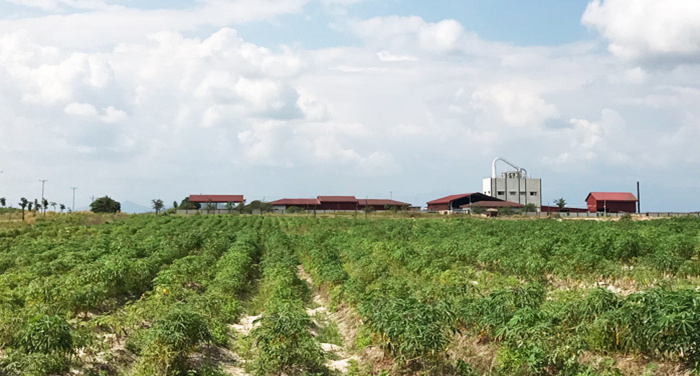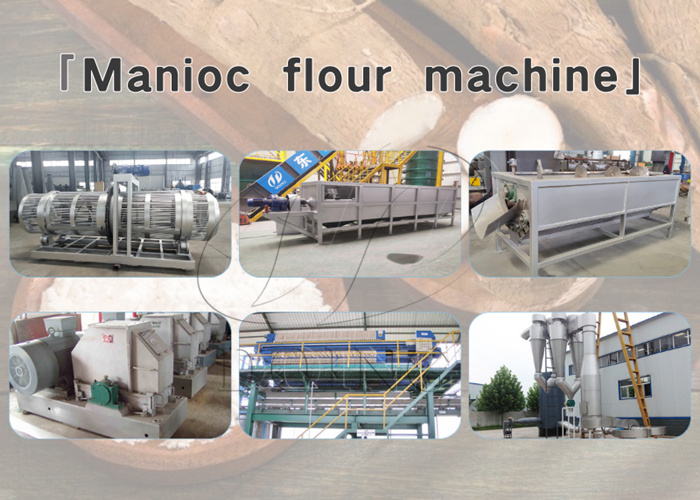How is the manioc business in Uganda?
The manioc business in Uganda is quite lucrative and plays a significant role in the country’s agricultural sector. manioc is one of the most consumed tubers in the country, which can be consumed as a whole tuber or dried to make flour. Additionally, manioc is also a valuable raw material for industrial purposes, such as biofuel production.
Thus, the manioc value chain in Uganda offers opportunities for both small-scale and large-scale farmers, as well as processors and traders. Small-scale farmers dominate manioc production, while larger-scale farmers and agribusinesses are involved in processing and value addition.
 Manioc agriculture
Manioc agriculture
What's more, the government of Uganda has implemented various initiatives to support the manioc processing sector, including providing improved varieties, promoting mechanization, and establishing processing facilities. For example, Uganda has a growing manioc flour industry. Many farmers and entrepreneurs started investing in manioc cultivation and processing to meet the demand of the domestic market and export to other countries.
Overall, the manioc business in Uganda presents significant opportunities for investment and growth, with the potential to contribute to food security, income generation, and economic development in the country.
Next, I will take manioc flour as an example to briefly introduce the manioc flour processing business. If you are interested, you can read on.
How to make manioc flour?
Manioc flour can be produced from fresh manioc tubers through cleaning, washing, peeling, crushing, de-sanding, dewatering, drying, fine milling, and sieving. Compared to traditional ways, the new wet processing technology can ensure a higher quality final product and achieve larger production capacity.
What machines are required for manioc flour production?
 Manioc flour production machine
Manioc flour production machine
Machines for manioc flour production can be divided into three sections: cleaning section, processing section, and drying section.
Cleaning section: dry sieve, paddle washer, and peeler.
Firstly manioc tubers are put into a feeding hopper, and then they will be conveyed to dry sieve machine. A dry sieve machine is used to remove impurities that are attached to manioc like sand, stones, etc. After that manioc will be put into paddle washer machine for complete cleaning by using water. Finally, the cleaned manioc will be sent to the peeler for the peeling process. A manioc peeler can remove the first and second layers of manioc roots and ensure that the final produced flour is of high quality.
Processing section: cutting machine, rasper, de-sander, and filter press.
After we get peeled and cleaned manioc from the previous section, the next is crushing. Firstly we use a cutting machine to cut full pieces of manioc into small pieces and then use a rasper machine to crush manioc, getting very fine mash. Then the de-sander machine will be used to remove sand debris. Finally, a plate and frame filter press will be used to dehydrate manioc mash to get wet manioc cakes.
Drying section: cake crusher, flash dryer, fine miller, and sieving machine.
Wet manioc cakes will first be crushed into small particles by a crusher machine. Then wet manioc powder will be conveyed into the flash dryer for drying purposes. After drying, we can get manioc flour with a moisture content of around 12%. To ensure the high fineness of the final product, a fine milling machine will be used after drying. And lastly, a sieving machine will be installed to separate coarse particles and get high quality manioc flour.
In addition to the manioc flour business, the manioc chips and manioc starch business is also a good choice. If you have related needs, feel free to contact us at any time.
Tel/Whatsapp: +86-13526615783
Website: http://www.cassavaprocessing.com
Email: sales@doingmachinery.com


Comments
Post a Comment
Hi,write down you message,and let's talk according the difference.